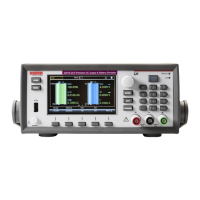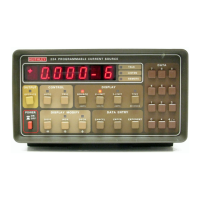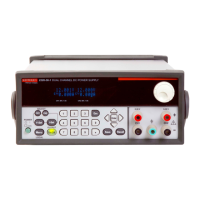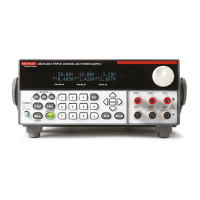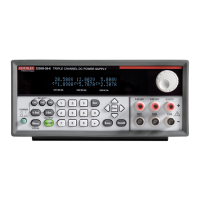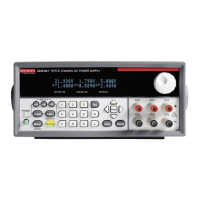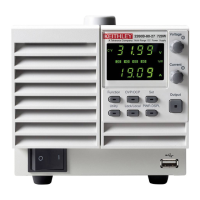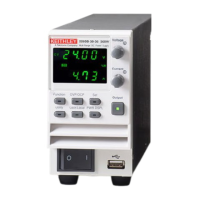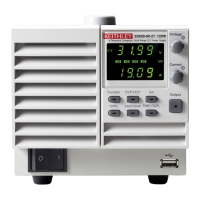Appendix B: Verification Series 2280 Precision DC Power Supply Reference Manual
B-38 077085503 / March 2019
10. Enter the voltmeter reading in the DC current load regulation (on page B-14) table for checking
current load regulation at the maximum voltage for your product.
11. Calculate the two values: Reference – Minimum and Maximum – Reference. Enter the values in
the appropriate columns in the DC current load regulation (on page B-14) table.
12. Power off the DUT and test equipment.
Check overcurrent protection
This procedure uses the same test setup as Check DC overvoltage protection (on page B-28).
Make sure the warm-up criteria have been met, as described in the Performance verification
conditions.
To check overcurrent protection:
1. Set the voltmeter as follows:
Set to measure DC voltage.
Set the current range to autorange.
2. Set the electronic load as follows:
Set to constant voltage (CV) mode.
3. Set the device under test (DUT) to 100% of the full-scale output voltage.
4. Set the overcurrent protection (OCP) threshold to 10% of full-scale output current.
5. Turn the DUT output on.
6. Set DUT current to OCP –0.3 A and then slowly increase the DUT current by 0.01 A step by step
until OCP is triggered. When triggered, the output voltage abruptly drops below 1 V, and an OCP
error is indicated on the display.
7. Enter the current number reading (where OCP triggering occurred) in the DC overcurrent
protection (on page B-15) table for checking DC overcurrent detection.
8. Reset OCP. Press the Enter key to clear the OCP error.
9. Set the OCP threshold to 25% of full-scale output current and repeat step 5 through step 8.
10. Set the OCP threshold to 50% of full-scale output current and repeat step 5 through step 8.
11. Set the OCP threshold to 75% of full-scale output current and repeat step 5 through step 8.
12. Set the OCP threshold to 90% of full-scale output current and repeat step 5 through step 8.
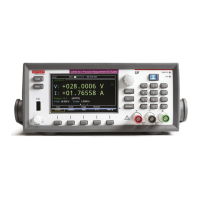
